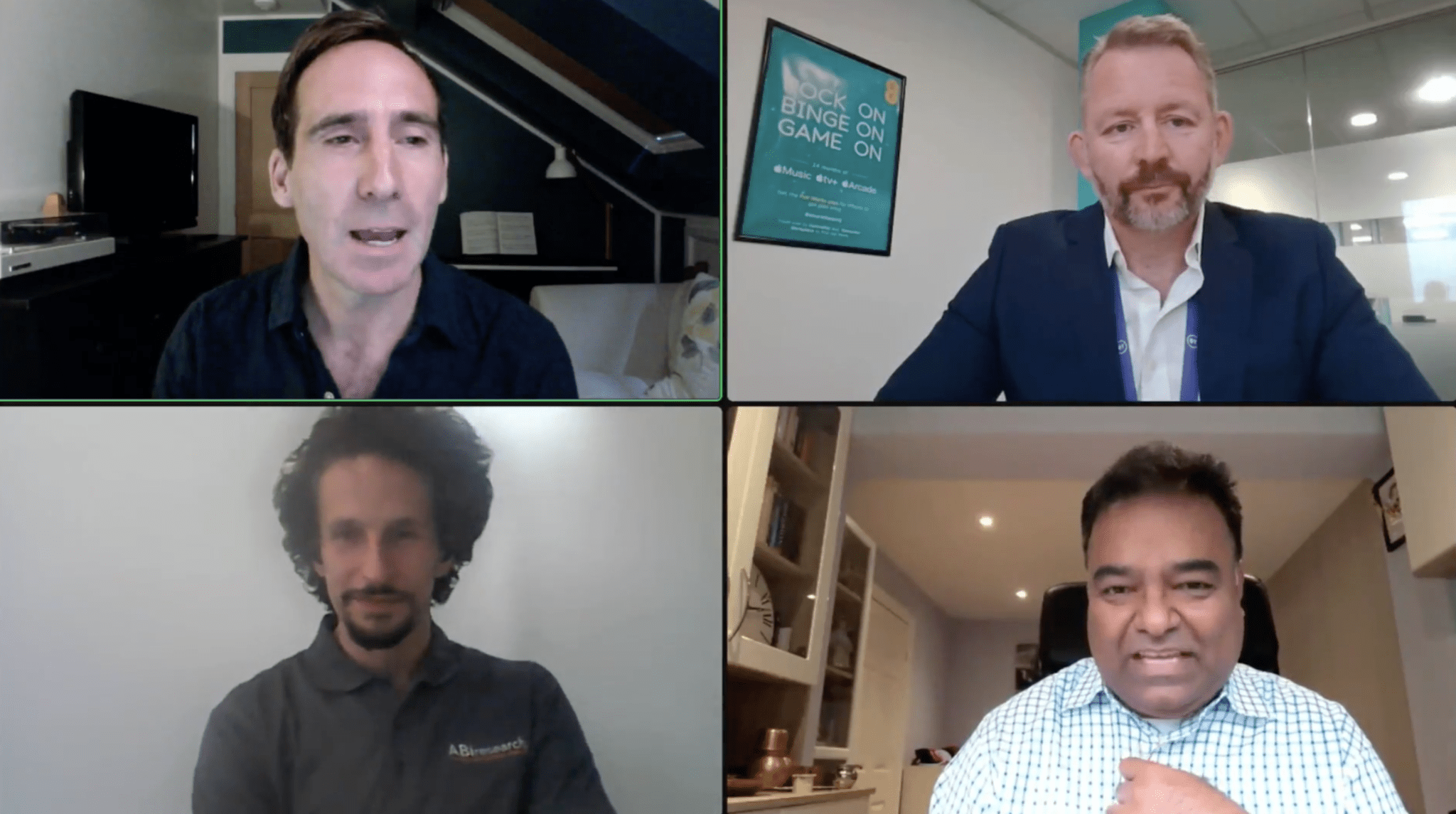A panel session at Private Networks European Forum earlier this month put the spotlight on the discipline of private 5G and edge system management, specifically, where traditional mobile operators are increasingly facing-off with rival factions in the developing Industry 4.0 supplier market. These other groups include system integrators, cloud providers, and industrial specialists, plus sometimes network equipment vendors, as well.
The session billed this standoff as a ‘battle royale’ for the hearts and minds of the new industrial economy, and asked a panel, which included speakers from telecoms provider BT and system integrator Tech Mahindra, about how roles and responsibilities will be divided up, and which side, ultimately, will win. Invariably, the answer to the last question was hardly conclusive – if it was ever given. But plenty of other talking points arose.
This article, in several instalments, attempts to summarise and order the bigger points from the session, as anecdotal conclusions about the state of the private LTE and 5G market today. The panellists on the session were Leo Gergs, senior analyst at ABI Research, Lou Walker, technology lead for mobile private networks at BT, and Bhushan Patil, chief growth officer for networks (EMEA + APJI) for Tech Mahindra.
Note, all sessions from Private Networks European Forum are available on-demand here.

1 | TELCOS EXPECT (EVERYONE EXPECTS) TO ‘PRIME’
This is where the real action is, and the point of this panel discussion. The process to design and deliver private cellular networks in different enterprises in different industries is hardly straightforward, especially when the market is new, but it can be systematically line-itemised and worked-through as a schedule of works on a spreadsheet, and familiarised and rationalised with each project. It also tends towards short-term purchases and contracts.
But the ‘prime’ leads the project onwards, also, to cover system integration and system management, and guarantee infrastructure on certain terms against failure and compromise. This is where the real money is to be made – or earned, actually. “One of the key things for [enterprises] is to have single accountability – one company they can go to, with accountability for the end-to-end solution,” says Lou Walker, tech lead for mobile private networks at BT.
BT, like other serious-minded telcos in the enterprise space, expects to lead this Industry 4.0 dance. “We are looking to prime, wherever appropriate – to take hold of the market and deliver full end-to-end services and solutions,” says Walker. But, then, so does everyone; major system integrators, cloud providers, and industrial specialists say the same – they want the attention of the enterprise, and the ear of the rest of the supplier ecosystem.
For system integrators (SIs), like Tech Mahindra, with a “dozen [commercial private 5G] engagements across the world”, the position seems negotiable, to an extent; its expectation is to always play a part, and to sometimes take the lead, adroitly and completely, as required. “Different customers have different views on who they want to [lead],” explains Bhushan Patil, chief growth officer for networks for Tech Mahindra.
“Some feel SIs will be better placed to integrate different components, [to shield] them from the tech complexity; some believe it is a telco play, and will work with the telco… to orchestrate everything [and] guarantee the network. That dynamic is still developing. [But] we will be a part of the ecosystem irrespective of who leads and who supports.” What is clear is that the Industry 4.0 market is nascent, and roles and responsibilities are still being defined.
“It is interesting to see where we go with all the different players in this market, and what they can offer, and how they offer it – from SMEs right up to large enterprises,” reflects Walker. More on this later, in discussion about how the enterprise market might be carved up between mission-critical and mission-possible use cases, and which parties will handle the supply and management of the edge systems to support them.
2 | THIS IS NOT A TELCO STORY (FIRST RULE OF 5G CLUB)
What is also clear is that telcos have to change – or else deliver on their talk of multi-disciplinary tech management. BT, so far as we know, to our ears, coined the term ‘tech-co’, to describe its own reinvention as more than just a telco (‘from telco to tech-co’). Which chimes with the idea, also, that, in 5G-club, no one talks about 5G – and the other idea, as well, that, in post-telecoms vernacular, connectivity is just another app for enterprises, in the edge app-tray.
As above, Walker, the single telco / tech-co on the panel, talks about priming the whole system – “not only… the connectivity solution, but the full end-to-end integration, and then supply or management of the use cases over the top as well”. BT is well positioned, he argues; its transformation to tech-co is a natural path – on the grounds it already has mobile and fixed network assets, plus a sizeable R&D arm, and a stable of vendor/developer partners.
Patil at Tech Mahindra – talking about the telecoms sector at large, and emphasising the integrator market’s closer familiarity with enterprise systems – says it is not about private tech systems, but about private business concerns. “Telcos are great at building the technology, and creating the backbone, but when it comes to selling to enterprises, of different varieties, the language has to be about use cases and domain expertise,” he says.
Which is where the likes of Tech Mahindra “can bridge the gap between technology and use cases”, he suggests. But Walker is the one to raise the Fight Club analogy, which the whole panel agrees with. “In the private 5G space, we don’t like to talk about private 5G; we talk about business outcomes,” he says. “The driver is not to sell 5G networks, but to sell the use cases and applications that run over the top to deliver business outcomes.”
It is a strange situation, in ways; that 5G is the single biggest opportunity in generational cellular telecoms, arguably, and the thing that no one should talk about. Patil comments: “Most of the 5G revenue opportunity for telcos is on the enterprise side, which is why private networks are critical for them – and for us, to play a role.” Of course, its subjugation in the industry sales patter is also an acknowledgement that the network is a functional component.
Because 5G is not the end-game, or the star turn. Of course. And the bombast in the market is, perhaps, less reflective of the pragmatism in the ‘channel’; its ancillary role, in carrier-led consultancy, might be a sign of cohesion and maturity – as engagements with enterprises get more serious. Walker says: “We have a whole range of use cases, and those are the products we are looking to sell. The network is just one of the underpinning fundamentals.”
3 | TOUGH REALITY CHECKS (SAME SH*T, DIFFERENT WAY)
Indeed, engagements with enterprises are getting more serious, at last. So says Leo Gergs, senior analyst at ABI Research, and the other panellist on the forum session. Gergs brought additional context – including to a previous address from GSA, which counted 889 ‘catalogued customer’ networks, and steady growth at about 250 geo-distinct reference per year – to say the private networks market has turned a corner, and also gone back to basics.
Because, actually, new cellular tech is being put to work in fairly prosaic exercises in enterprise environments. This is a “tough reality check” for the supplier market, reckons Gergs, but also a necessary step for cellular to stand-up more zingy industrial use cases. “We are past the point where the technology is hyped,” he says. “Which is no bad thing. Because we are arguably in the most important phase now – past all the fancy telco focused use cases.”
Now the hard work starts, the message goes, to flow everyday workloads onto new 5G systems in factories and warehouses. “Enterprises are starting to look at more realistic use cases [they can] address with private cellular in the short and medium term,” says Gergs. The big vision about lights-out smart factories can be discussed down the line; much of the initial work, often still in trial, is just to make sure the ‘lights stay on’ when systems go wireless.
Gergs explains: “The [current] trend is towards using [private] cellular as a data pipe, purely for connectivity – to transmit [data from] existing automation systems. In manufacturing, for example, there is a very healthy and mature landscape for automation solutions [on Ethernet already], and lots of the [private LTE and 5G] trials are about transmitting over (industrial layer-seven app protocols such as) PROFINET or PROFIsafe on a cellular network.”
He goes on: “[Another] driver is [with] large outdoor coverage areas, where the value proposition with cellular, compared to Wi-Fi, is very… easy to understand for enterprises; because it is more economical with cellular than Wi-Fi to provide connectivity for a large outdoor area, in ports or oil and gas fields for example, with less infrastructure.” And so, the grand promise of private 5G meets the cold reality of commercial enterprise.
But then, so it has to; plus, of course, PROFINET-over-cellular, as an example, is a proof point for industrial 5G, and outdoor coverage is a gateway application for harder industrial use cases. So these ‘reality checks’, as Gergs says, are also sanity checks, and urgent signs of progress.
To be continued…

